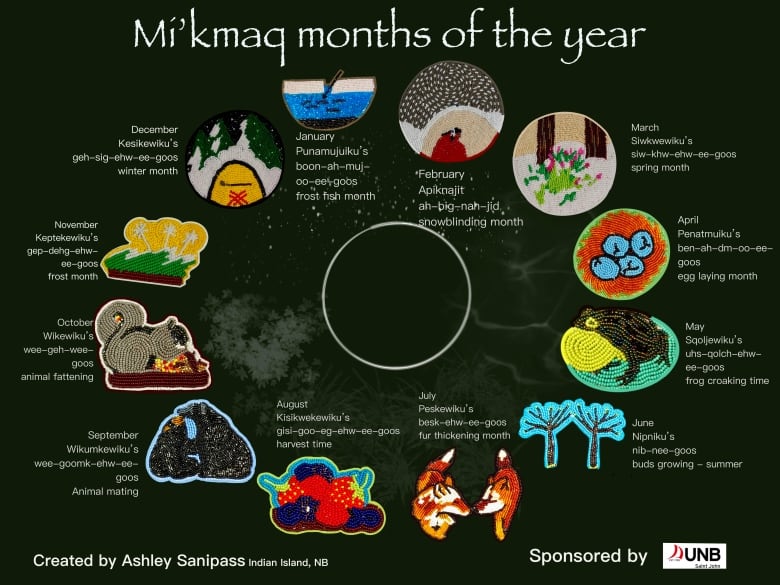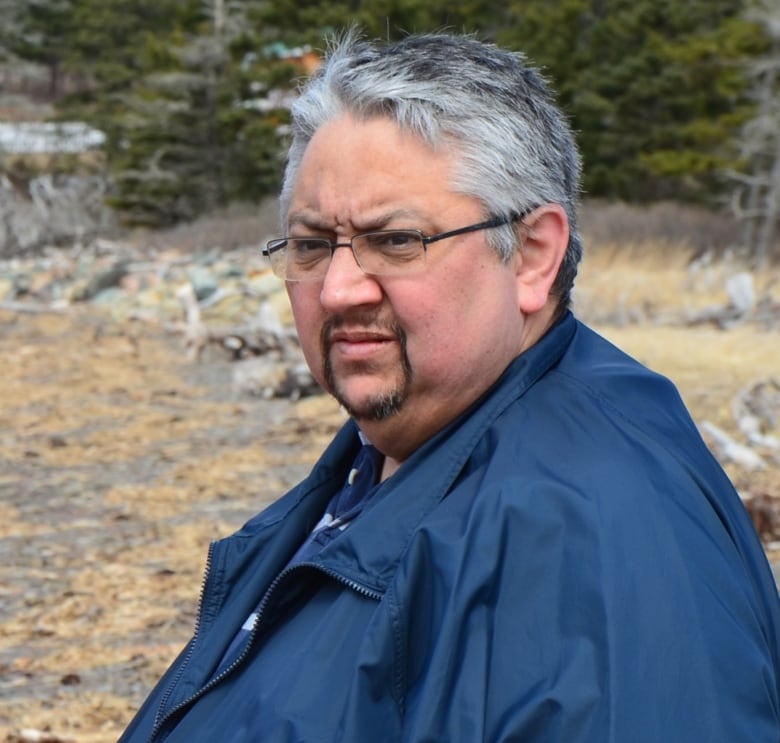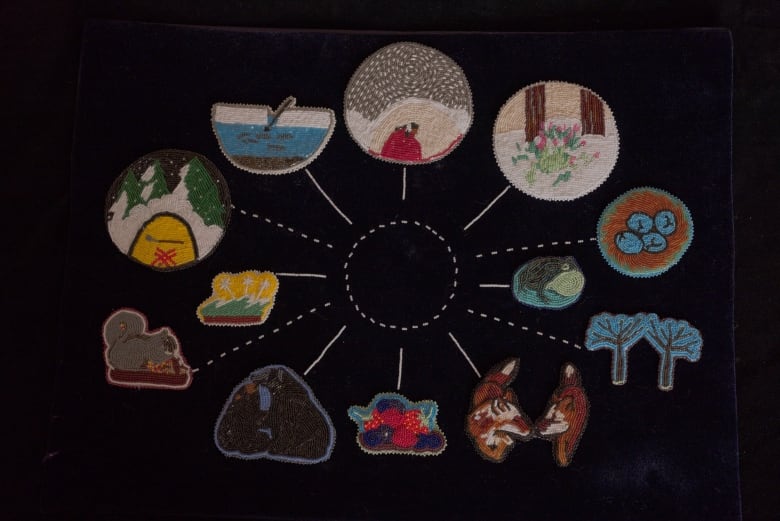
Ashley Sanipass connects most with the beading she did of two nuzzling bears — one of 12 pieces that represent the months of the Mi’kmaw calendar.
In English, the month would be called September, but in Mi’kmaw, it’s called Wikumkewiku’s, which translates to “animal mating.”
“I wanted to teach people about the whole idea of how our months are more descriptive than what we hear in English. I wanted to show people that part of the language,” said Sanipass, 37.
The Mi’kmaw artist from Indian Island First Nation near Moncton has been learning her language for several years.
Sanipass wanted to create something that would allow her to both share her language, which is known as being “verb- based,” and show how each calendar month is called something that is actually happening in the territory at that time.
From the croaking of frogs to the time when animals start fattening themselves, she beaded an image of each month into a 12-piece circle.

She said the project, which took her 180 hours to complete, has also taught her how her ancestors used the land based on their description of each time of year.
“As you move on in the calendar, you know when it’s time to hunt because that’s how we describe that time of the year. You knew when it was time to harvest because that’s how we would describe that time of the year,” said Sanipass.
Gerald Gloade, an elder from Millbrook First Nation in Nova Scotia, said it’s important people learn about the Mi’kmaw calendar.
He said each month is based on the journey of the moon around the planet Earth, so rather than 12 months, there are 13 in a year. He said along with reflecting what’s happening, the calendar is also a guide.
“It talks about our way of life, where to be and when to be there — knowing what’s coming ahead and what you need to do to prepare for it,” said Gloade.

He said each district in Mi’kma’ki may have different teachings about the land so their months and themes may differ.
He said the sharing of the teachings and stories depicted in the calendar honours the elders and the calendar offers important lessons.
“It gives you a stronger connection to the environment itself and once you get that connection, you understand that responsibility for the environment,” he said.
One challenge Sanipass faced was that some communities have adopted the 12-month calendar while others still keep a 13-moon calendar.
Sanipass said she tried to honour both by including the 13th moon in the centre of her poster.
During her research she spoke to elders from several communities and pulled out common themes about the name of the month and how to depict the activity in her beaded pieces.
Sanipass started researching the calendar themes in March and by September she began beading the different pieces. She struggled to bead concepts like November’s frost month, but had a lot of fun beading animal mating season where she beaded the affectionate bears.
She worked with University of New Brunswick Saint John to create the poster, which includes the English month name, the Mi’kmaw word for the time of the year and an English translation.
Her work is among three pieces by Wabanaki artists commissioned by the campus that will be on display in January.
Sanipass said she had a lot of fun learning from elders and language experts.
“Mi’kmaw people have such good humour and the laughter at times when we’re talking about the months and learning,” she said.

One of her language teachers is Vince Barlow from Indian Island. The Mi’kmaw elder said laughter is an important part of a language journey and he’s proud of Sanipass.
“I’m excited for her and she’s not afraid to make a mistake,” said Barlow, 77.
He hopes to one day go through the poster together with Indian Island’s Mi’kmaw language group.